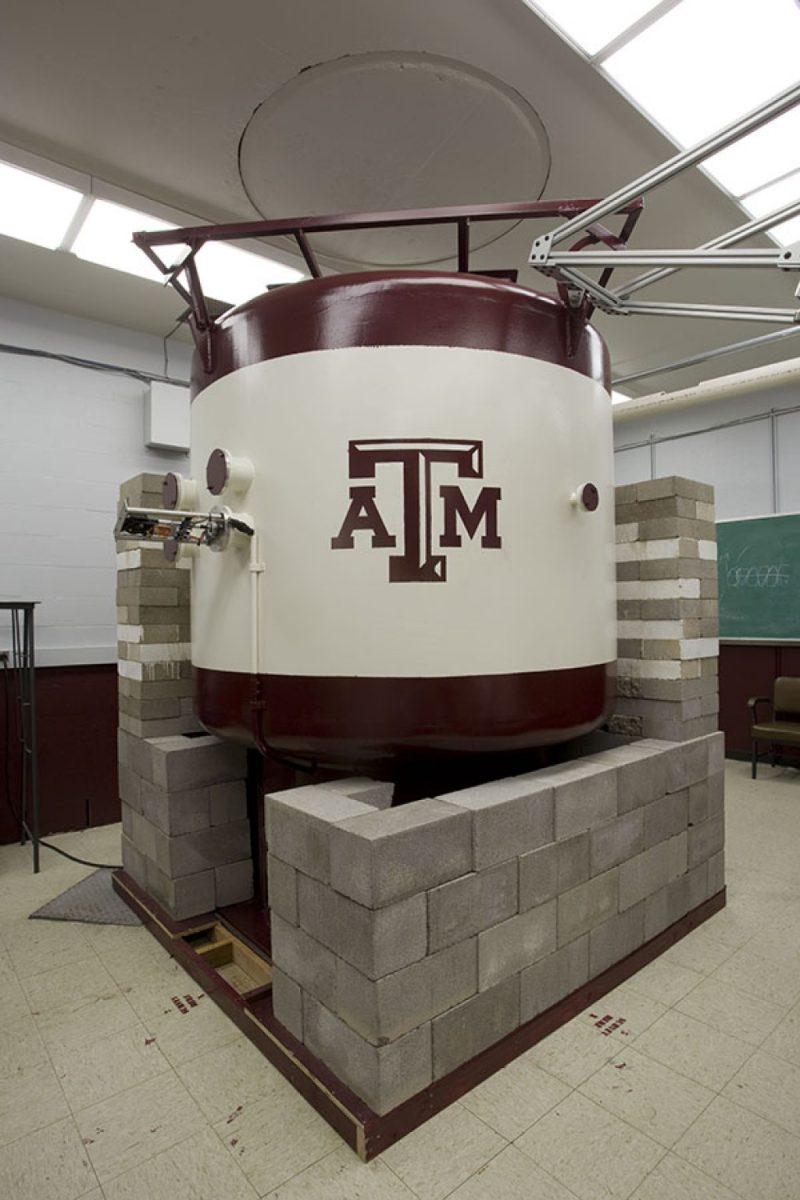While Zachry Engineering Complex is home to many classrooms and research labs, the facility also houses the AGN-201M, a fully operational nuclear reactor.
Every lab and academic department will be moved out of Zachry by December in preparation for the Engineering Education Complex, a building key to Engineering 25 by 25. The reactor will remain throughout the construction, however, prompting several changes to nuclear engineering classes.
Katherine Banks, dean of the Dwight Look College of Engineering, said that due to the renovation of Zachry into the Engineering Education Complex, student access to the reactor has been cut off since Sept. 1 in order to ensure the safety of both students and the reactor and to remain in accordance with federal regulation.
The AGN-201M Reactor was purchased in 1957 by the university for use by the nuclear engineering department. While the AGN is only a 5-watt reactor, Reactor Manager Chris Crouch said the AGN functions in a manner identical to larger reactors and provides students a great tool to learn about the functions of the device.
“It is a nuclear reactor in every sense of the word,” Crouch said. “All reactors do is essentially make neutrons, and so that’s what we do here. We make neutrons so that students can see how those neutrons behave in different environments. Fission is going on, and that is what the reactor is for.”
The reactor is used in two reactor experiment courses, NUEN 405 and 606. Since the AGN will not be available to students during the length of construction, Crouch said all students enrolled in those courses will use the research reactor located in the nuclear science center, which is not an unusual occurrence.
“Thankfully A&M has two nuclear reactors, and students can actually do the labs at both reactors,” Crouch said. “And what the department has done in the past is have half the lab sections work out at the nuclear science center and then we would have the other half here in Zachry Engineering. As a result of the construction, all the labs will now be held at the Nuclear Science Center, using their reactor.”
Crouch said the reactor in the nuclear science center is used primarily as a research reactor and as a result is much larger than the AGN.
“They’re completely different,” Crouch said. “The AGN is a 5-watt thermal power reactor, while the science center’s is a one megawatt. It’s much, much bigger. It’s what we call a swimming pool reactor and the AGN is actually a tank with the reactor core in it.”
Crouch said the usefulness of the AGN lies in its simplicity, which affords students the chance to study the workings of the reactor without having to take into account the complicating effects larger reactors have on certain calculations.
“It’s a really good teaching tool because of it’s simplicity,” Crouch said. “Whenever students are at the other reactor, something they have to take into account with their calculations is the effect of temperature on the reactor. At this facility, temperature has a very small effect on the reactor because it is such a low power. Its a really good teaching tool to show students the fundamentals of nuclear science the AGN reactor was built with the purpose of teaching and training, whereas the other reactor is a research tool.”
While students won’t be able to access the reactor, staff in charge of the reactor will still be able to monitor and maintain the AGN.
“Even though the reactor is still going to be closed for classes, we’re still going to have access, and we’re still going to be monitoring the reactor as we would be otherwise,” Crouch said. “Throughout the whole period, our personnel will have access to the site and we will still be monitoring it. We have systems in place that will ensure safekeeping during the renovations.”
Marilyn Martell, senior assistant vice chancellor for marketing and communications at the Look College, said measures will be taken to ensure the safety of faculty and construction workers. Martell said that these safety regulations are in accordance with a government agency that oversees the management of reactors such as the one housed in Zachry.
“The United States has a very active federal regulating body called the Nuclear Regulatory Commission, and they are very particular about how the reactors at universities are handled, so they have very specific instructions and policies and procedures,” Martell said. “They will come down a couple times of year to inspect.”
Engineering growth pauses nuclear reactor access
September 16, 2014
0
Donate to The Battalion
Your donation will support the student journalists of Texas A&M University - College Station. Your contribution will allow us to purchase equipment and cover our annual website hosting costs.
More to Discover








